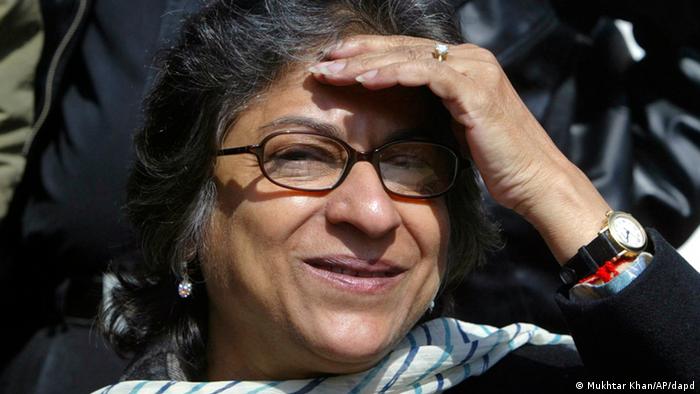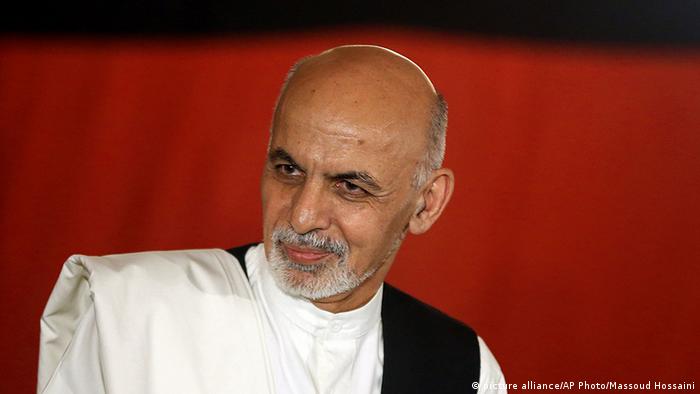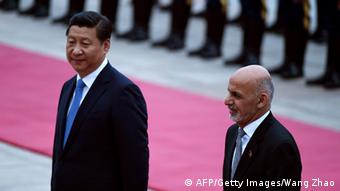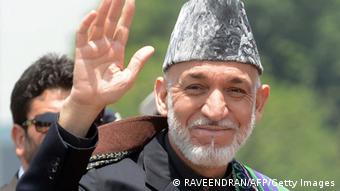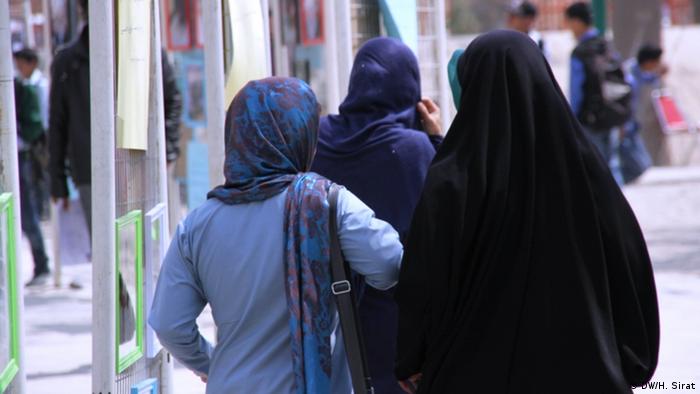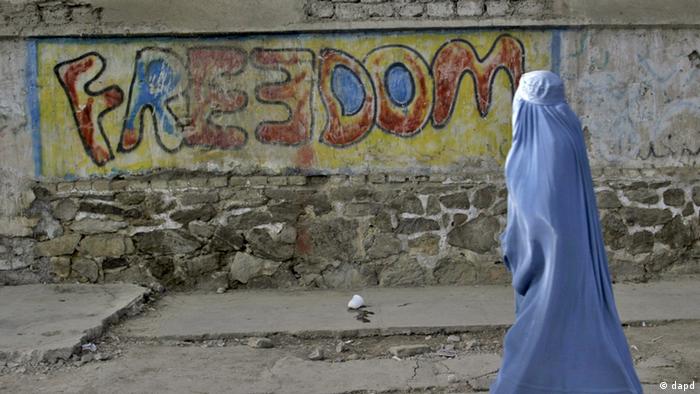M WAQAR..... "A man's ethical behavior should be based effectually on sympathy, education, and social ties; no religious basis is necessary.Man would indeed be in a poor way if he had to be restrained by fear of punishment and hope of reward after death." --Albert Einstein !!! NEWS,ARTICLES,EDITORIALS,MUSIC... Ze chi pe mayeen yum da agha pukhtunistan de.....(Liberal,Progressive,Secular World.)''Secularism is not against religion; it is the message of humanity.'' تل ده وی پثتونستآن
Saturday, November 29, 2014
More than 16,000 sickened with Ebola, 7,000 died
ISIS sets off suicide bombs on Turkey border, monitor group says
By Alexander Dziadosz
At least 30 fighters have been confirmed as killed in weekend clashes; 21 belong to Islamic State, and nine to Kurdish forces.
Islamic State fighters set off two suicide bombs on the Turkish border with the Syrian Kurdish town of Kobani on Saturday amid clashes that have killed at least 30 fighters, a monitoring group said.Kurdish militia have been holding off Islamic State (also known as ISIS and ISIL) for more than two months in the battle for the town, known as Ayn al-Arab in Arabic, but neither side has been able to gain a decisive advantage.The Britain-based Syrian Observatory for Human Rights said Islamic State fighters detonated a suicide car bomb at the border crossing at dawn on Saturday and that clashes broke out after.
A second suicide bomber with an explosive vest later blew himself up in the same area, the Observatory said.Clashes also broke out throughout the town itself, and another car bomb was detonated to the south, the Observatory said.
At least 30 fighters from the two sides have been confirmed as killed so far, said Rami Abdulrahman, the Observatory's director. Twenty-one of those were Islamic State fighters, including four suicide bombers. The remaining nine were from the Kurdish forces.
Slavery levels in UK 'higher than thought'
There could be between 10,000 and 13,000 victims of slavery in the UK, higher than previous figures, analysis for the Home Office suggests.
Modern slavery victims are said to include women forced into prostitution, "imprisoned" domestic staff and workers in fields, factories and fishing boats.
The figure for 2013 is the first time the government has made an official estimate of the scale of the problem.
The Home Office has launched a strategy to help tackle slavery.
It said the victims included people trafficked from more than 100 countries - the most prevalent being Albania, Nigeria, Vietnam and Romania - as well as British-born adults and children.
Data from the National Crime Agency's Human Trafficking Centre last year put the number of slavery victims in the UK at 2,744.
The assessment was collated from sources including police, the UK Border Force, charities and the Gangmasters Licensing Authority.
The Home Office said it used established statistical methodology and models from other public policy contexts to estimate a "dark figure" that may not have come to the NCA's attention.
It said the "tentative conclusions" of its analysis is that the number of victims is higher than thought.
Concerted action
The Modern Slavery Bill going through Parliament aims to provide courts in England and Wales with new powers to protect people who are trafficked into the countries and held against their will. Scotland and Northern Ireland are planning similar measures.
But outlining the strategy for government departments, its agencies and partners, Home Secretary Theresa May said legislation was "only part of the answer".
The "grim reality" is that slavery still exists in towns, cities and the countryside across the world, including the UK, she said.
"The time has come for concerted, co-ordinated action. Working with a wide-range of partners, we must step up the fight against modern slavery in this country, and internationally, to put an end to the misery suffered by innocent people around the world."
The Home Office said the UK Border Force would roll out specialist trafficking teams at major ports and airports to spot potential victims, and the legal framework would be strengthened for confiscating the proceeds of crime.
The modern slavery strategy will also see:
- The government identify "priority countries" to work with, as well as other organisations including churches.
- British embassies and high commissions and NCA liaison officers develop local initiatives abroad
- Work to strengthen the response by local authorities to child abuse, including trafficking
- Work to raise awareness among homeless shelter staff of the signs of modern slavery
Modern slavery minister Karen Bradley told the BBC she was not surprised by the figures.
She said: "This is very much a hidden crime and the important thing is that we get it out in the open. If we compare where we were 200 years ago, the anti-slavery campaigners there had to make people acknowledge that slavery was wrong.
"What we have to do today is not make people acknowledge it's wrong - everybody knows it's wrong - but we have to find it.
"It's a hidden crime, it's going on in streets, in towns, in villages across Britain and we need to help people find the signs of it so we can find those victims and importantly then find the perpetrators."
Aidan McQuade, director of charity Anti-Slavery International, said the Home Office's figures "sounded about right" but questioned whether the government's strategy went far enough.
He told the BBC : "If you leave an employment relationship, even if you're suffering from any sort of exploitation up to and including forced labour, even if you're suffering from all sorts of physical and sexual violence, you'll be deported.
"So that gives an enormous power in the hands of unscrupulous employers. And frankly the protections which the government has put in place are not worth the paper they're written on in order to prevent this sort of exploitation once they've given employers that sort of power."
Aneeta Prem, founder of the Freedom Charity, said recent publicity around the issue was helping, but "everyone needs to be vigilant."
She said: "It could be someone forced into sex trafficking, someone forced to work on a farm with no pay or little pay."
She added: "It could be somebody that's working in a car wash, somebody that you just suspect is in the wrong situation. We can all spot these signs and hopefully report it and get something done about it."
U.S. - Ferguson Authorities Face Criticism Over Handling of Mike Brown Case -
 By Tierney Sneed
By Tierney Sneed
Troubling details in grand jury documents renew longstanding skepticism of police brutality investigations.
 St. Louis County Prosecutor Robert McCulloch's father was a white police officer killed on the job by an African-American in 1964, leading some to question his involvement in the Ferguson case.
St. Louis County Prosecutor Robert McCulloch's father was a white police officer killed on the job by an African-American in 1964, leading some to question his involvement in the Ferguson case.
St. Louis prosecutor Robert McCulloch is facing criticism over his handling of the grand jury investigation into the death of Michael Brown in Ferguson, Missouri, which resulted in Brown’s shooter, Ferguson Officer Darren Wilson, not being indicted. Documents released after the grand jury announcement Monday have also led to scrutiny over the actions officials took at the crime scene.
"The process is broken," said Benjamin Crump, an attorney for the Brown family, in a press conference Tuesday. "The process should be indicted."
The information grand juries receive about a case is at the discretion of prosecutor, and usually a specific charge is laid out for them to consider. In Wilson’s case, the grand jury was given so much evidence, witness testimony and context to consider that it stretched into 25 separate meetings over the course of three months -- usually grand juries take only a matter of a few days. Furthermore, McCulloch did not point the secret, 12-person panel to a charge preferred by the prosecution, but rather laid out five charges for them to consider, leaving the decision about whether to prosecute up to them.
Writes Jeffrey Toobin in The New Yorker: "He turned it over to the grand jury, a rarity itself, and then used the investigation as a document dump, an approach that is virtually without precedent in the law of Missouri or anywhere else."
The documents the prosecutor’s office released after the announcement, all of which St. Louis Public Radio has made available online -- have also provided a number of details that some experts have said are troublesome. For instance, as the Washington Post noted, the investigator from the medical examiner's office did not take measurements or photographs at the scene, that Wilson was allowed to go unescorted to the station and put his own weapon in an evidence bag and his initial descriptions of the incident were not recorded on tape.
Furthermore, jurors were also told about the criminal history of Dorian Johnson -- Brown's friend who was with him during the robbery and the shooting -- and discrepancies among his and other witness accounts were highlighted for them, but did not question any of Wilson's testimony, prompting jurors to take the officer's account at face value while introducing doubt about what the witnesses said they heard or saw. The fact that Wilson also chose to testify itself is uncommon, according to a St. Louis Public Radio report, and Brown’s attorneys were not allowed to participate in the proceedings.
In effect, McCulloch "allowed Darren Wilson to sit there and give his side of the story," Missouri state Sen. Jamilah Nasheed told the Los Angeles Times. "But there was no one there to give Michael Brown's side of the story."
Even before the final announcement, concerns were raised about McCulloch’s involvement. McCulloch’s father was a white cop killed on the job by an African-American 50 years ago, prompting some to call on Missouri Gov. Jay Nixon to remove McCulloch from the case. Nixon refused.
McCulloch has also been questioned for his decision to make the non-indictment announcement -- long expected to draw high emotions -- at 8 p.m. at night, as the cover of darkness posed additional challenges to curbing riots. Throughout the development of the case, authorities have also been criticized for their initial reluctance to release Wilson’s identity, and once they did per an open record request, to put it out alongside a surveillance tape of Brown and Johnson allegedly stealing cigarellos from a local supermarket the morning Brown was killed, even though the robbery was not what prompted Wilson to initially confront Brown.
Concerns over how police misconduct allegations are handled existed long before this particular case.
A 1998 Human Rights Watch Report noted a “natural conflict of interest” when district attorneys are asked to prosecute a member of a law enforcement agency they regularly depend on to investigate and testify for their other criminal investigations.
Time and time again in police brutality cases, calls for special, outside prosecutors to be brought in to investigate misconduct are renewed.
According to a 2009-2010 survey by Cato Institute’s National Police Misconduct Report Project, of the 8,300 incidences identified as credible police misconduct allegations, less than half resulted in charges for the officer; of the 426 law enforcement officers whose alleged misuse of force resulted in a fatality, only 28 faced charges.
A grand jury did not bring charges against a cop who recently shot and killed a African-American in an Ohio Wal Mart who was holding a BB gun mistaken for a rifle. A grand jury investigation into the death of Eric Garner -- who died because of an illegal chokehold by a New York cop -- is underway and the case of a 12-year-old Cleveland boy who was fatally shot last week by an officer who thought the toy gun he was carrying in his waistband was a firearm will also be considered by a grand jury.
Obama Pushed ‘Fullest Extent’ of His Powers on Immigration Plan
Months before President Obama took executive action last week to reshape the nation’s immigration system, Jeh C. Johnson, the secretary of Homeland Security, quietly convened a small group of advisers to explore the legal limits of the president’s powers. Working in secrecy, Mr. Johnson’s team huddled for hours daily under orders to use “our legal authorities to the fullest extent” on a new deportations policy, a senior administration official said. In five White House meetings over the summer, Mr. Johnson and Mr. Obama, both lawyers, pored over proposed changes, eventually concluding that the president had the authority to enact changes that could affect millions of people and significantly alter the way immigration laws are enforced. “I don’t think he wanted to be in the position of taking executive action,” Ali Noorani, executive director of the National Immigration Forum, an advocacy group, said of Mr. Obama. “It was not the way he wanted to fix the system.” Nonetheless, “at the end of the day, he felt this was the only option he had.” The decision has infuriated Republicans just as they take full control of Capitol Hill — “We will not stand idle as the president undermines the rule of law in our country,” Speaker John A. Boehner pledged this month — although it remains unclear how the new Congress will react. Republicans have raised the possibility of suing the president, and a handful of conservatives have called for impeachment or a government shutdown. But the party is struggling to respond to Mr. Obama without alienating Hispanic voters, who will be critical to victory in 2016. Mr. Johnson’s efforts, along with Mr. Obama’s rising frustration with Mr. Boehner and an advocacy community that relentlessly pressured the White House, led to the president’s prime-time address to the nation on Nov. 20, when he said he would shield as many as five million undocumented immigrants from deportation and allow many of them to work legally. But the roots of Mr. Obama’s speech, which nervous Democrats asked him to give only after the midterm elections, date back a full, tumultuous and angry year in Washington. As 2014 began, the president and his aides were hopeful that Republicans in the House might pass an immigration bill that Mr. Obama could support. The president was in regular touch with Mr. Boehner and his top lieutenants, who told him they recognized the need to increase border security, improve the legal immigration system and find a way to deal with the 11 million undocumented people living in the United States. Each time Mr. Boehner arrived at the White House for an event, the president would pull him aside and ask about immigration, according to White House and Republican aides. Mr. Boehner urged patience, saying there was a “narrow path” to get something done, despite opposition in his party from what Republican aides call the “boxcars crowd,” a reference to conservative members who favor deportation for most of the 11 million. The Senate had already passed a comprehensive bill that Republicans did not believe would pass in the House. Several House Republicans were quietly drafting separate legislation to boost border security and make changes to the legal immigration process. The speaker held out hope that a piecemeal approach might eventually pass. Mr. Obama told Mr. Boehner that he would not attack Republicans on immigration, even though he would have to press for legislation “every now and then,” a senior White House official said. The president understood, the official said, that “what they were trying to do was hard.” But immigration activists were already impatient. Some of the president’s biggest allies had gone public with demands that Mr. Obama stop the record number of deportations they said were tearing apart their families. The president’s response was the same: “Until Congress passes a new law, then I am constrained in terms of what I am able to do,” he told Jose Diaz-Balart in an interview on Univision on March 6. His allies were not convinced. Richard Trumka, the president of the A.F.L.-C.I.O., accused Mr. Obama of having “deported over a thousand people a day.” Janet Murguía, the head of N.C.L.R., a Latino organization also known as the National Council of La Raza, called him the “deporter in chief.” Protesters held hunger strikes and sit-ins in front of the White House and taunted him with chants: “Obama, Obama, don’t deport my mama.” By spring, as the Congressional Hispanic Caucus was on the verge of adopting a resolution condemning his deportations, Mr. Obama called his staff together in the Oval Office and said he wanted to meet with the activists and the Latino members of Congress face to face. The meetings did not go well. In mid-March in the Roosevelt Room, the president urged activists to stop attacking him and keep the pressure on Republicans to pass immigration legislation. “It’s too early to give up,” he said. He berated Ms. Murguía for the “deporter in chief” comment and told them that Mr. Johnson, his new secretary of Homeland Security, would conduct a review to see if deportations could be enforced in a “more humane” way. The activists made clear they wanted more. Angelica Salas, from the Coalition for Humane Immigrant Rights of Los Angeles, reminded Mr. Obama that his administration had deported two million people. “People are coming to us in total distress and pain,” she told him. Lorella Praeli, who represented young immigrants known as Dreamers, warned him that her coalition would “make sure everyone knows you have the power to do something about these deportations.” Deepak Bhargava, executive director of the Center for Community Change and a participant at the meeting, recalled that Mr. Obama doubted the advocates’ deportation figures and did not take the criticism easily. “The president often was irritated and gave it back,” he said. In the meantime, Mr. Johnson’s review of the president’s legal authority was supposed to help resolve the issue. But his first attempt in May was rejected, White House officials said, because in the president’s view, he did not go far enough. The effort only sought to sharpen the guidance for immigration agents, but did not provide work permits or directly shield anyone from deportation.By MICHAEL D. SHEAR and JULIA PRESTON
And yet, with Republicans still struggling to move forward, the president’s Democratic allies on Capitol Hill reminded him that even Mr. Johnson’s modest proposals would probably derail any hopes for legislation.Mr. Obama told Mr. Johnson to keep working. The president announced that he would delay the results of the review until the end of the summer, hoping to give Mr. Boehner a last chance for action.
But in early June, Representative Eric Cantor, then the majority leader in the House, lost his Republican primary in Virginia after being accused of being soft on immigration. Soon a surge of unaccompanied children across the border with Mexico created a sense of crisis about the need for more security and weeks of Republican outrage. At a White House event for the Professional Golfers Association, Mr. Obama pulled Mr. Boehner aside.Mr. Boehner told the president that the path for action in the House “had narrowed almost to the vanishing point,” according to aides for both men. White House officials said the president was frustrated with the Republicans. But he was also coming to the realization that he could not rely on Congress to act.
On June 30, the president called Mr. Boehner to tell him he was about to declare the legislative effort dead. In the White House Rose Garden, Mr. Obama then announced he would “fix as much of our immigration system as I can on my own, without Congress,” and would act by the end of the summer.He instructed Mr. Johnson to undertake a much broader examination of his executive authority. The secretary and his team concluded Mr. Obama could not grant protections to seven million or more immigrants who might have qualified under the comprehensive bill passed by the Senate in 2013, as advocates had demanded. After consulting with Mr. Obama, they identified initiatives that could include five million. The secretary took a hands-on approach, officials said. Sitting at his office computer, Mr. Johnson wrote final versions of most of the directives issued on Nov. 20 setting up the controversial programs.
But there was another delay: Democratic senators who were up for re-election in 2014 told the White House that an announcement by the president could be so politically damaging in their states that it would destroy their chances to hold control of the Senate. On Nov. 4, most of those Democrats lost anyway.
INDO-PAK TRADE AND POLITICAL BALANCE – ANALYSIS
By Chandrani Sarma
Throughout history, improvement in political relations between nations tends to result in better bilateral trade and vice versa. Take famous examples of neighbouring countries like Brazil-Argentina, France-Germany. Total bilateral trade between Brazil and Argentina is more than US$ 30 billion today. Brazil accounts for the largest share of Argentine imports and Argentina is the third-largest importer from Brazil, behind only the United States and China. These two countries that today share very close ties over trade, culture, and tourism were once at war nearly two centuries ago. France and Germany at war with each other, even before the World wars, decided to let go of enmity in the 1950s. Now, Germany is France’s most important trading partner with bilateral trade worth some EUR 161 billion in 2012.2
Trade can also be seen among countries that share huge borders among themselves. The longest international border in the world, between the United States and Canada, is of 8893 km. In economic terms, it translates into Canada being the US’s largest goods trading partner. Table 1 ranks some of the countries that share some of the longest international borders and the bilateral trade between them.

India – Pakistan share the 11th longest international border in the world. Yet, India with a population of 1.2 billion and Pakistan with a population of 196 million had a miniscule bilateral trade of US$ 2.6 billion in 2013. Sporadic exchanges of fire along the border are quite commonplace, and the recent spat has also resulted in civilian casualties. Trade talks and events have been cancelled, and trade flows have also suffered a blow.
So is the reverse possible; can trade change the political scenario? Trade potential between the two countries has been estimated to be fifteen times its current value3, but it is yet to pick up because of major setbacks. If there are gains from trade for both the countries, it may lead to bigger peace constituencies automatically developing. This paper sheds light on these recent trade trends in South Asia, focusing mainly on India and Pakistan and delves deeper into their current trade relations and potentials.
Gravity Model
Analogous to Newton’s Law of Gravity, the Gravity model of trade relates the trade flow between two countries to the size of their economies as well as the distance between them.4 This would imply that, ceteris paribus, trade would flow mainly between neighbouring countries and to rich countries.
Till a few years ago, the supply chain story was pretty simple; the developing countries exported largely to the developed countries where demand was high. Now, that is slowly but surely changing; and the development of the middle-class is an important factor in these shifting trade flows.
India is witnessing a rapid shift in export destinations from the developed countries like the United Kingdom and the US to Asian countries like China and Singapore. A publication on India’s trade and investment by Exim Bank highlighted that overall Asia’s share in India’s exports increased from 40.2% in 2001-02 to 51.6% in 2011-12 while Europe’s declined from 24.8% to 19% in the same period. Though, it can be argued that the US is still one of the top export destinations for India, its share in India’s total exports has been falling from 21% in 2001 to 17% in 2006 and to about 12% in 2012.5
Shifting patterns in trade flows can also be seen for Pakistan. An article in Tribune in 2012 claimed that the US and the Middle East were decreasing in significance as export markets for Pakistan, while South and East Asia were gaining importance.6 While the whole of European Union is still the largest export destination, South Asia – Afghanistan, Bangladesh, Bhutan, India, Maldives, Nepal and Sri Lanka – is now the second-largest market for Pakistani goods. In terms of a share of Pakistan’s total exports, the EU’s has fallen from 28.4% in 2003 to 24.6% in 2012, while South Asia’s has increased from 6.3% in 2003 to 16.7% in 2012.
These trends can be seen in South Asian countries and clearly indicate that trade is shifting away from receding economies to emerging and neighbouring economies.
India-Pakistan Trade
India-Pakistan trade history has been very poor. Political and security issues have affected economic cooperation between the two countries. While India’s imports from Pakistan have rarely gone above US$ 500 million, India’s exports to Pakistan average at US$ 1.6 billion during the period 2005-2014. In a span of a decade, bilateral trade has increased from US$ 0.87 billion to US$ 2.7 billion.
Despite being aware of the various possible gains from the untapped trade-potential and the global trends towards greater trade among neighbouring and emerging countries, these two nations hardly feature in each other’s total trade. In 2013-14, imports from Pakistan stood at a mere 0.09% of the total imports by India, and its exports to Pakistan were 0.7% of New Delhi’s total export profile. This is in contrast to 1948-49 when 56% of Pakistan’s exports were sent to India, and for the next several years, India was Pakistan’s largest trading partner.7
Despite being aware of the various possible gains from the untapped trade-potential and the global trends towards greater trade among neighbouring and emerging countries, these two nations hardly feature in each other’s total trade. In 2013-14, imports from Pakistan stood at a mere 0.09% of the total imports by India, and its exports to Pakistan were 0.7% of New Delhi’s total export profile. This is in contrast to 1948-49 when 56% of Pakistan’s exports were sent to India, and for the next several years, India was Pakistan’s largest trading partner.7

Currently, the top five products imported by India from Pakistan are edible fruits & nuts, mineral fuels, raw cotton and denim8, organic chemicals and plastics (like unsaturated hydrocarbons, polyvinyl chloride etc.). Indian exports to Pakistan include processed cotton, prepared animal fodder, edible vegetables, plastics and organic chemicals (like polypropylene, xylene, polyethylene etc.).
The following tables show the top five products imported and exported by Pakistan and India all over the world.

Given the shifting trends mentioned above, India and Pakistan have a lot to gain from each other, especially given their cultural similarities. These tables confirm that there is immense trade potential in mineral fuels and vehicular components. Mineral-fuels trade potential alone is estimated at US$ 10.7 billion of which India’s export potential is US$ 9.4 billion and import potential US$ 1.3 billion.10 And experts say that a mere increase in the exchange of goods can increase the prospects for a variety of region-wide boons – including increased FDI flows to trans-boundary gas pipeline projects.11
The next two tables give evidence of the trends mentioned earlier in the paper. Pakistan’s top export destinations and import sources now include Asian countries like Afghanistan, China and Malaysia. Similarly, India’s export destinations and import sources include China. With greater cooperation and understanding, India and Pakistan can progress as significant trade partners.

Current Issues
Hence, every new government on either side wants to improve relations to facilitate trade between the two countries. India gave the MFN status to Pakistan in 1996. Though Pakistan is yet to give Most Favoured Nation (MFN) status to India because of fear of domestic political ramifications, breakthroughs like Pakistan’s transition from a positive to a negative trade goods list in 2012 are significant in liberalising bilateral trade. However, there is still a huge trust deficit between the two countries; they fear that liberalising trade will crush their domestic industries. This can be gauged by the fact that most of the potential bilateral trade items figure in India’s sensitive SAFTA list or Pakistan’s negative list.
India is protecting its textiles sector, where Pakistan has a comparative advantage. Despite its bigger market size, which would not be affected much by incoming Pakistani goods, India maintains a defensive strategy. Similarly, this bigger market size of India is seen with apprehension by Pakistan; 30% of Pakistan’s negative list contains items from automobile sector because it is feared that the relevant Indian products could flood the Pakistani market and crush the local industry. Pakistani farmers feel threatened since the Indian government gives various subsidies to its agricultural sector, rendering the former uncompetitive.
To add to this, land and air routes between the two countries were greatly restricted after the terrorist attack on the Indian Parliament in 2001. Only one land route, through the Attari- Wagah border, is allowed for trade, that too, in respect of only 138 items. Hence, a greater proportion of trade occurs through smuggling or third countries like Dubai estimated at $250m to $3billion. One estimate pegs trade via the Mumbai-Dubai-Karachi route at 88% of the total informal trade, and the remainder as cross-border informal trade through the Amritsar-Lahore and Rajasthan-Sind border routes.13 This ultimately affects the end users and affects the potential gains from formal trade.
Various recommendations have been proposed by scholars and industry experts to ease trade from both sides.14 Travel/Visa issues should be made simpler, regulatory framework should be put in place to facilitate investments across the countries etc. The Federation of Indian Export Organizations’ (FIEO) President Rafeeq Ahmed has said that governments of both these countries should open more points of trade through the land route. However, both countries expect their counterpart to take the first step in liberalising trade and giving market access.
The Way Forward
Given the pro-business approach both the present governments in these two countries, it is essential to tap the potential now, before the opportunity is lost. Mutual MFN status (or the Non-discriminatory market access status) is essential for starting the process. The two countries should also collectively identify the industries that might be negatively affected by free trade and the best ways to compensate them. If some industries need to be protected, there should be a mutual agreement to that effect. Placing them on negative or sensitive list is not a solution but a dead-end.
Mr Khurram Khan, Commerce Minister of Pakistan, in his recent address to the Hyderabad Chamber of Commerce and Industry (HCCI), said Pakistan would struggle to grow if it were to be confined to its borders. It is inevitable that there will be gains from trade for both sides; economic development will follow from a greater market access. Governments on both sides would benefit from trade tariffs that could possibly be used to improve infrastructure to facilitate greater formal trade, which currently is being lost to illegal trade. They will also experience a stabilisation of prices due to greater supplies and the generation of employment. Besides this, thousands of workers, entrepreneurs, and companies that reap the benefits of trade would pressure politicians to maintain healthy bilateral relations.
Subsequent steps should be aimed at resolving the various logistical issues like the operation of trucks beyond borders, opening of bank branches to ease business. Issues of rigorous quality checks of the imported goods, which sometimes tend to retard trade, can possibly be resolved with mutual collaboration with international organisations like ISO. An ideal future collaboration may also see the giving of mutual transit rights to each other: India could allow Pakistan to access Nepal, Bangladesh, and Bhutan through its territory while receiving rights to access Afghanistan through Pakistan. Economic and political relations are inter-linked and trade could be that road to peace. It has been achieved before with strong political leadership in other nations, and it can happen for India and Pakistan as well.
Asma Jahangir - Pakistan's fearless rights campaigner
Pakistani activist Asma Jahangir is one of the five winners of this year's "alternative Nobel prize." A fearless critic of the Islamic country's military establishment, she is the first Pakistani to have won the award.
Jahangir is to receive this year's Right Livelihood Award - also called the "alternative Nobel prize" - on Monday, December 1, along with US whistleblower Edward Snowden, British journalist Alan Rusbridger, Sri Lankan rights activist Basil Fernando, and US environmentalist Bill McKibben in Stockholm, Sweden.
The Sweden-based award "honors courageous and effective work for human rights, freedom of the press, civil liberties and combating climate change," according to a statement released by the Right Livelihood Award committee on Wednesday, September 24.
Created in 1980, the annual award acknowledges efforts that its founder Jacob von Uexkull felt were being ignored by the Nobel Prizes.
62-year-old Jahangir is Pakistan's leading human rights activist and a former president of the South Asian nation's Supreme Court Bar Association.
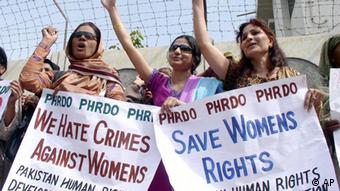
'It is a tribute to a large number of Pakistanis who have worked relentlessly for better human rights,' says Jahangir
She is also a former chairperson of the Human Rights Commission of Pakistan, a non-governmental rights-based organization, and has worked with the United Nations as Special Rapporteur on freedom of religion or belief.
An award 'for all activists'
In a DW interview, Jahangir said the "alternative Nobel prize" was not an individual award, but a recognition of all rights activists of Pakistan who work under very difficult circumstances. "It is a tribute to a large number of Pakistanis who have worked relentlessly for better human rights in the country. It is also an award for the voiceless people and all others who have been victims of human rights abuses," she said.
"It is significant enough to show to the world that not everything is negative about Pakistan, and that there are people who have consistently struggled against oppression over the years," said Jahangir, adding that the award was proof that Pakistan had come a long way as a country thanks to the efforts of so many people towards achieving democracy and the rule of law.
Jahangir admits that it is difficult for a woman to lead human rights campaigns in a male-dominated society: "I had to face imprisonment and house arrests, but it made me tougher. As a lawyer, many a time I took up difficult and sensitive cases dealing with minorities' and women's rights. Yes, I constantly receive threats, and to be very honest, at times it is very scary. But I have to continue my work."
In an interview with DW in 2012, Jahangir claimed her country's powerful spy agency, the Inter-Services Intelligence (ISI), plotted to murder her.
A long struggle
Asma Jahangir was born in an affluent family in Lahore. In the 1960s, when Islamabad suppressed the independence movement in its former Eastern wing - today's Bangladesh - Jahangir's father protested and was repeatedly jailed or put under house arrest. Jahangir says this experience had a tremendous impact on her.
"What I have learnt is that you are no longer materialistic after that. The way my father worked altruistically, and the manner in which he used to go behind bars and come back home smilingly was inspirational.

The Right Livelihood Award acknowledges efforts that its founder Jacob von Uexkull felt were being ignored by the Nobel Prizes
He passed away when he was only 61. He had cancer, and we knew he would leave us soon. I remember that my sister and I were sitting at his deathbed, and he looked at us and said, 'I am not going to die, I will live through you'," reminisced Jahangir, who later founded a women's rights forum in 1980 together with her sister, Hina Jilani, a lawyer herself.
In Jahangir's numerous jobs, she has raised her voice against the discrimination of religious minorities, against "honor" killings, or the treatment of minors in Pakistani jails.
It's been a long journey. The winner of this year's Alternative Nobel prize says there is now more awareness among the people of Pakistan. "Politicians are more sensitive towards human rights issues. We believe that when there is a democratic set up, we have a greater voice. The freedom of expression has also improved in the country," Jahangir said.
Signs of change in Afghanistan's foreign policy
The new Afghan President Ashraf Ghani seems to have taken a different approach to his country's foreign policy. Experts say the challenge is to maintain a balance in ties with all regional and international players.
Since becoming Afghanistan's President at the end of September, Ghani has visited Saudi Arabia, China and Pakistan. Most recently, he also attended the South Asian Association for Regional Cooperation (SAARC) summit in Nepal's capital, Kathmandu. In talks with foreign leaders during his official trips abroad, Ghani mainly focused on Afghan peace process, economic cooperation, regional security and geopolitics.
The countries which Ghani chose for his first official trips, experts say, indicate the new president is taking a different strategic approach to that of his predecessor Hamid Karzai to resolve the Taliban problem. Ghani aims to use China's influence over Pakistan and, wants Beijing to raise pressure on Islamabad to bring the Taliban to the negotiating table, analysts argue.
The president received assurances from both his Chinese as well as Pakistani counterparts of their support for the Afghan peace process.
Failed attempts
The Taliban have been fighting a guerrilla war against the government in Kabul and its international allies for over a decade. Afghanistan accuses Pakistan of supporting the insurgents and using them as a strategic tool to counter Indian influence in Afghanistan. Islamabad, however, denies these claims.
During his time in office, former Afghan President Hamid Karzai failed to engage in any fruitful peace talks with the Taliban leadership, who are believed to have hideouts in Pakistan's border regions with Afghanistan. Although Karzai leaned on the US and Pakistani support in the peace process, he strictly insisted on an Afghan-led initiative.
Washington's efforts at initiating Afghan peace talks paid off when the Taliban opened an office in the Qatari capital Doha in June 2013, but president Karzai criticized the move to set up a Taliban base in Qatar and called for the peace talks to be shifted immediately to Afghanistan.
At the same time, Karzai - who remained close to India during his presidency - also tried not to compromise New Delhi's position in talks with the Taliban. Indian authorities have remained skeptical of the Taliban as they view the group as Pakistan's strategic bargaining chip in Afghanistan.
A different approach
But unlike Karzai, President Ghani seems to have a more China-centered foreign policy, Said Massud, Kabul University lecturer and Afghan political analyst, told DW, adding that going to Beijing before visiting New Delhi was a "planned strategic move."
Massud, however, said that the president should maintain a degree of balance in his foreign policy in a way that it satisfies all the players that have interests in the country. "Failing to do so could lead to disastrous consequences," he warned.
Abdul Ghafoor Liwal, an expert on constitutional law and director of the Kabul-based Regional Studies Center, also believes there have been some changes in Afghanistan's foreign policy since the new president took office. Liwal, however, stressed that Ghani's visit to China was more a coincidence than a strategic move.
The analyst, however, highlighted two major changes in Afghanistan's foreign policy under the new president. "The first change is that Ghani wants to have a more institutionalized foreign policy which was lacking during the last 13 years. Our foreign policy was not stable under President Karzai and was subject to changes based on personal preferences. The second one is an effort to maintain a balance in ties with all regional and international players," Liwal underlined.
But balancing relations with major regional and international players, the expert argues, is "difficult or in some cases even impossible," and it all depends on the team which President Ghani will assemble to implement his government's foreign policy.
UN Women chief 'seriously concerned' Afghan women's gains may be reversed
With foreign troops set to leave Afghanistan and aid organizations scaling back operations, UN Women Chief Phumzile Mlambo-Ngcuka warns of the negative impact the pullout may have on policy gains made by Afghan women.
Despite a myriad of challenges facing Afghanistan, remarkable gains have been made on women's rights over the past 13 years. Since the US-led invasion of the country in 2001, women have won back many of the rights they lost during the Taliban regime. Equality between men and women is mandated in the country's constitution. The number of girls getting an education is rising and women are part of the National Assembly.
The Afghan government has also been hailed for making strides to protect human and civil rights, such as the signing of the Convention on the Elimination of All Forms of Discrimination Against Women (CEDAW) and the enactment of its own law on the Elimination of Violence Against Women (EVAW) in 2009. However, there have been complaints about the slow implementation of these laws and violence remains a reality for many women and girls.
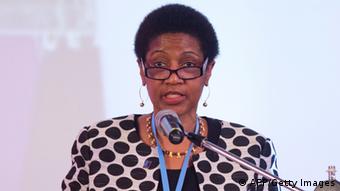
Mlambo-Ngcuka: The real challenge lies in the consistent implementation of the laws designed to protect women
Phumzile Mlambo-Ngcuka, the executive director of UN Women, says in a DW interview she is seriously concerned that the upcoming transition will have a strong negative impact on the fragile policy gains made by Afghan women in the past 10 years. The UN official argues that overall political instability, the reduction of aid inflows, and a readiness to make compromises in the interest of ongoing peace and reconciliation negotiations with the Taliban may endanger these gains.
DW: What situation are women in Afghanistan facing at the moment?
Mlambo-Ngcuka:Afghan women and girls continue to experience discrimination and limited access to opportunities, resources, civil liberties and power. There are two main causes that drive this development: Firstly, Afghan society is rooted in tribal structures, ethnic cultures, and traditions. This remains the primary cause of gender inequalities. Conservative traditions, customary practices, and religious interpretations are collectively impeding realization of women's human rights.
Secondly, limited institutional capacities to deliver have hindered full implementation of policy and legislation aimed at gender equality and empowerment of women. Within government, there is currently insufficient capacity to translate policies into projects and services that would improve conditions.This affects gender equality policies as well as many other sectors, including education, health, trade, labor, and the economy. In some instances, funds and opportunities have not been used to their full extent.
Moreover, a strong relationship exists between discriminatory social institutions and overall development. All in all, the underlying concerns for women include: (i) Low participation in politics and governance; (ii) Continued and increasing insecurity and limited access to justice; (iii) Pervasive violence against women; (iv) limited participation in peace and reconciliation processes; (v) poor access to health services; (vi) limited economic security; and (vii) inadequate access to education and high female adult illiteracy.
Addressing these needs for the female population would have significant positive effects on the growth and sustainability of the national economy.
What progress have women in Afghanistan made over the past 13 years?
There has been gradual progress, with the enactment of the Elimination of Violence Against Women (EVAW) Law being perhaps the greatest achievement. This law codifies what constitutes violence against women and creates a legal framework for prosecution. It has also focused dialogue on women's rights.
It is noteworthy that space for such dialogue between civil society and government remains open to all. Other legal reforms include the gazetting of the revised Criminal Procedure Code, which has been engendered and more strongly reflects international standards on gender-based-violence-related crimes as well as protection of the rights of men and women.
The real challenge, however, lies in the consistent implementation of these laws, especially EVAW. There remains significant work to be done on ensuring equal and transparent application of the law, moving away from the current dependency on mediation and traditional conflict resolution mechanisms.
Politically, 27.5 percent of the National Assembly members are women, giving Afghanistan a rank of 36 out of 190 countries globally. Of the 420 seats in the Provincial Councils, 20 percent are reserved for women; a reduction of 5 percent as a result of recent revision of the election law.
Moreover, about 30,000 women have an increased formal voice at local level in community councils; one woman has been appointed governor and one as mayor. However, women are under-represented in cabinet, advisory and diplomatic posts. In this year's presidential and provincial council elections, an estimated 37 percent of the voters were women.
However, although women have achieved some representation in parliament, they do not yet have significant influence in the political arena. Women elected on reserved seats are largely considered to lack constituency-based legitimacy and political authority.
After the 2010 elections, only 3 women attained cabinet ministerial positions (12 percent) and only five are deputy ministers (7 percent). The new government has promised an increased number of women in high decision-making positions; the Cabinet has not yet been finalized.
Does violence against women remain endemic in the country?
The Ministry of Women's Affairs reports that over 4000 cases of violence against women were registered last year. However, this number underestimates the real scope of the issue, which is widespread, and reflects a lack of education, insufficient access to basic services and economic opportunities, and the few opportunities women have to participate in all aspects of social and political life.
Husbands are not the sole perpetrators of violence against women in the home: mothers-in-law, sisters- and brothers-in law, as well as other male family members have also been identified as abusers by studies conducted on violence against women in the country. Direct abuse, condoning violence and encouragement of sons to beat their wives is reported as common.
This is not to understate the high prevalence of violence by non-family members and the effects of 30 years of conflict during which rape and gender-based violence was used as a weapon and hidden behind a legacy of impunity. It is therefore important to address legal aspects as well as the prevention and protection aspects of violence against women, through engagement of all stakeholders, with particular emphasis on men, boys and local leadership - religious, political, cultural and social.
Events such as the recent rape of a three-year-old girl remind us forcefully of the difficulties of families to bring perpetrators to justice and of the trauma they face as they cope not only with the attack but the stigma that follows. Violence against women is a symptom of deeper social and development issues; if no attention is paid to the root causes, this type of violence will not diminish.
Has the Elimination of Violence Against Women law failed to achieve its goal?
Although controversial, the EVAW Law has raised the profile of the gender agenda in Afghanistan, providing a platform for debate and awareness raising on issues related to gender equality and the rights of women and girls particularly, to live a life free of violence. The law itself has not failed, but the irregular and weak implementation of the law means that women still cannot claim justice, and many perpetrators of violence go free.
Studies confirm that the level of violence against women in Afghanistan is exceptionally high – up to 87.2 percent of women have experienced some form of violence. Different forms of violence are prevalent in the country: physical violence, psychological violence, economic violence, social abuse, sexual violence and rape, forced marriage, early marriage and dowry (walwar, pashcash).
Some practices (ba'ad and badaal) include families selling their often pre-pubescent daughters to older men, either as a way to boost family income and reduce mouths to feed at home, as a way to reduce (family) disputes or, in some areas of Afghanistan - South and Eastern parts - as "blood money" for intentional murder.
Are you concerned that some of the gains made by women during the past 13 years may be jeopardized once foreign troops leave the country?
Afghanistan will assume full responsibility for security by end-2014, most international military forces will be withdrawn, and overall assistance will be reduced. These changes will have a profound impact on Afghanistan's economic and political landscape beyond 2014.
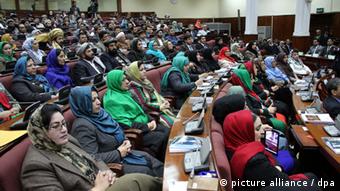
Although women have achieved some representation in parliament, they do not yet have significant influence in the political arena, says the UN Women chief
I am seriously concerned that the transition will have a strong negative impact on the fragile policy gains made by Afghan women in the past 10 years. Should the outcome be violence and protracted internal insurgency, this will be extremely damaging to development. International experience indicates that political stability and consolidation are key ingredients for peaceful development.
Afghan state-building processes must take gender equality into account. Insecure environments often lead to increased gender-based violence and undermine development efforts. Similarly, security programs must take into account the different roles of men and women in society, to avoid the risk of being unsustainable over the long‐term.
There has been forceful rhetoric around women's rights from both national and international actors since the international intervention in 2001. This has made an important contribution over the past decade to reversing some of the injustices and human rights abuses perpetrated under the Taliban regime. Nonetheless, overall, the actions taken to improve the situation of Afghan women have not matched the rhetoric.
The gains for Afghan women made in the past decade could be endangered by overall political instability, the reduction of aid inflows, and a readiness by both international and national sides to make compromises in the interest of ongoing peace and reconciliation negotiations with the Taliban.
What must the new Afghan government and the international community do to improve the lives of women and truly strengthen their rights?
The gender equality and women's empowerment agenda needs to remain a human development agenda, rather than a political one, in order for Afghanistan to truly develop its full potential. UN Women strongly calls for women's rights never to be used as a bargaining tool in future negotiations with the Taliban.
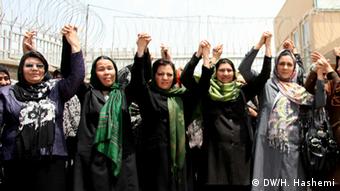
The gains made in the past decade could be endangered by overall political instability or the reduction of aid inflows, says Mlambo-Ngcuka
UN Women strongly advocates for an enhanced partnership between government and civil society in order to achieve sustainable progress. The international community cannot be solely responsible for raising red flags and negotiating change – this must come from civil society as well.
The international community, in the light of the shifting environment and potential decline of resources, must also work closely with government and civil society to identify durable Afghan-led solutions, with strategic plans for phasing down of external support. There also needs to be recognition of the fact that social change of this magnitude takes time - generations in fact – and withdrawing support too quickly might undermine the directional change started over the past 12 years.



